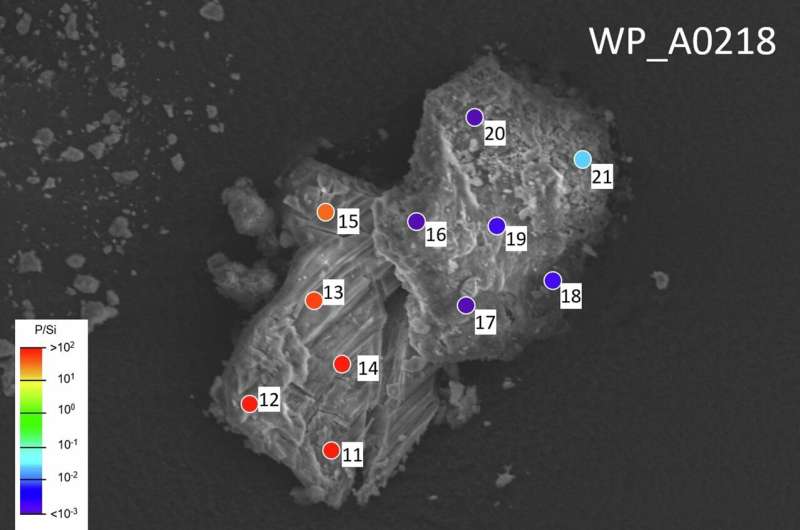
October 8, 2024 by Bob Yirka , Phys.org
Collected at: https://phys.org/news/2024-10-ryugu-sample-analyses-asteroids-compounds.html
An international team of researchers with a wide range of backgrounds has found evidence of asteroids providing the compounds necessary for life to get its start on Earth. In their paper published in the journal Nature Astronomy, the group describes their study of a small sample of material collected from Ryugu that was brought back to Earth.
In 2014, the Japanese space agency JAXA launched a rocket holding a space probe called Hayabusa2 that was sent to Ryugu—a C-type asteroid that has roughly the same orbit around the sun as the Earth. Once it reached its target, the probe collected surface samples and also dust collision samples, both of which were returned to Earth in 2020.
Since that time, the samples collected by the probe have been studied by a host of teams looking to learn different things about the asteroid and its history. In this new study, the research team examined a collision sample from Ryugu looking for evidence of asteroids as the source of many of the compounds needed for life on Earth.
The work by the researchers involved placing grains of Ryugu material in a sealed chamber designed and built by the group—it allowed for the use of a spectral microscope in a vacuum-sealed environment. The samples were placed on sapphire dishes to allow them to be studied using wavelengths beyond the visible spectrum. The dishes were placed on polished gold-coated mirrors to prevent contamination.
Using X-ray spectrometry, and other inspection tools, the researchers found examples of hydrated magnesium, ammonium, and phosphorus. The findings show that asteroids such as Ryugu are made of not just organic elements and compounds, but also compounds that are in their hydrated form, which could have served as building blocks for life on Earth.
Such a finding, the researchers note, shows that the grains in which they were held originated in deep space, past Jupiter. If they had been formed any closer to the sun, they would have evaporated. The research team also notes that finding ammonium is particularly important, as its molecule can contribute both hydrogen and nitrogen when it breaks down.
More information: C. Pilorget et al, Phosphorus-rich grains in Ryugu samples with major biochemical potential, Nature Astronomy (2024). DOI: 10.1038/s41550-024-02366-w
Journal information: Nature Astronomy

Leave a Reply